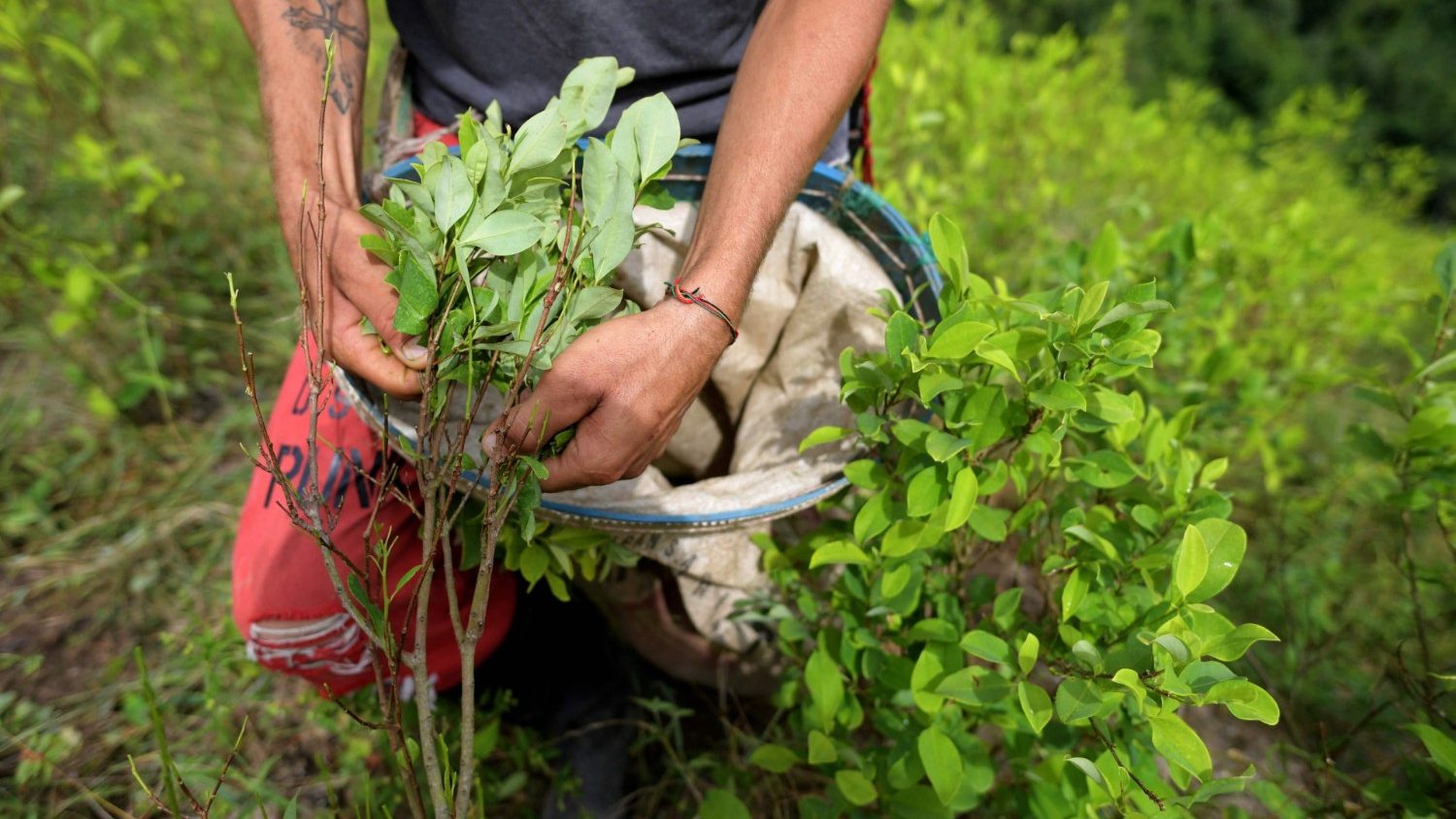Image via
Colombia grew a record quantity of coca plants in 2022, according to a new report by the United Nations Office on Drugs and Crime (UNODC).
Last year, Colombian farmers planted 568,340 acres of coca, the largest crop the UN has seen since it started monitoring production in 2001. The country’s coca cultivation has been expanding steadily over the past two decades, but jumped up an additional 13% in 2022 to meet the massive global demand for cocaine. The UN estimates that this boost in cultivation increased Colombia’s potential cocaine output to a record 1,738 tons, a 24% increase from 2021.
“It is worrying that each year there is an increase in coca crops in the country,” said UNODC regional director Candice Welsch during a presentation on the report, Al Jazeera reports.
Another recent report by the UN explains exactly why Colombia is growing more coca than ever. The number of global cocaine users hit a record high of 22 million in 2021, up from 21 million the previous year. The total number of coke users has been increasing every year, climbing from 0.32% of the global population in 2004 to 0.42% in 2021. The drug is maintaining its popularity in the US, UK, and Europe, but its use is now expanding throughout Africa, Asia, and Southeastern Europe as well.
Coca is also grown in other South American countries like Peru and Bolivia, but Colombia is the world leader in coca cultivation. The UN estimates that around 60% of the cocaine that is available on global markets comes from Colombia. And two-thirds of the country’s coca is grown in the southern provinces of Narino and Putumayo, along the Ecuador border. To avoid detection, cartels have hidden over half of the country’s coca plantations in Indigenous reserves, forest reserves, and national parks.
US officials have continually goaded the Colombian government to fight the rise of cocaine production with ineffective War on Drugs enforcement strategies. Colombian cops have burned whole fields of coca to the ground, starting fires that have spread through local forests. In 2019, the US convinced local officials to adopt an even more toxic strategy – spraying cancer-causing glyphosate-based herbicides on coca farms. Of course, that plan also required Colombia to sign a lucrative contract with Monsanto (now part of Bayer) to supply these toxic chemicals.
Colombia’s current president, Gustavo Petro, is taking a stand against these outdated prohibition policies, however. “The war on drugs has failed,” he said in a speech reported by the UN last year. “What is more poisonous for humanity, cocaine, coal or oil? The opinion of power has ordered that cocaine is poison and must be persecuted, while it only causes minimal deaths from overdoses…but instead, coal and oil must be protected, even when it can extinguish all humanity.”
“The forest that should be saved is at the same time being destroyed,” Petro continued. “To destroy the coca plant, they throw poisons such as glyphosate that drips into our waters, they arrest their cultivators and then imprison them… The jungle is burning, gentlemen, while you wage war and play with it. The jungle, the climatic pillar of the world, disappears with all its life. The great sponge that absorbs the planetary CO2 evaporates. The jungle is our savior, but it is seen in my country as the enemy to defeat, as a weed to be extinguished.”
Petro has called for neighboring Latin American countries to band together to crack down on drug trafficking and cartels. Colombia has also attempted to launch crop substitution programs that encourage local farmers to switch from coca to legal crops, but coca remains far too profitable for poor farmers to ignore. There is one new crop that could make that switch much more valuable, though. Colombia’s highest court recently ruled that cannabis consumption is a constitutional right, and the country’s legislators are now drawing up plans to legalize cannabis nationwide.











